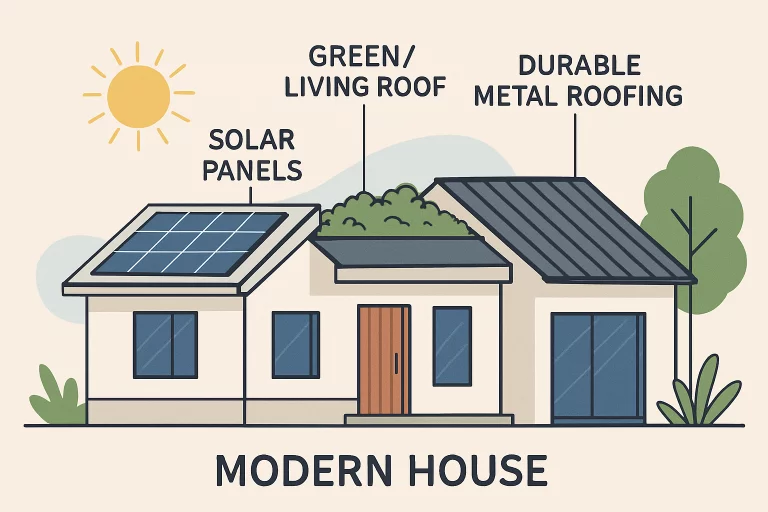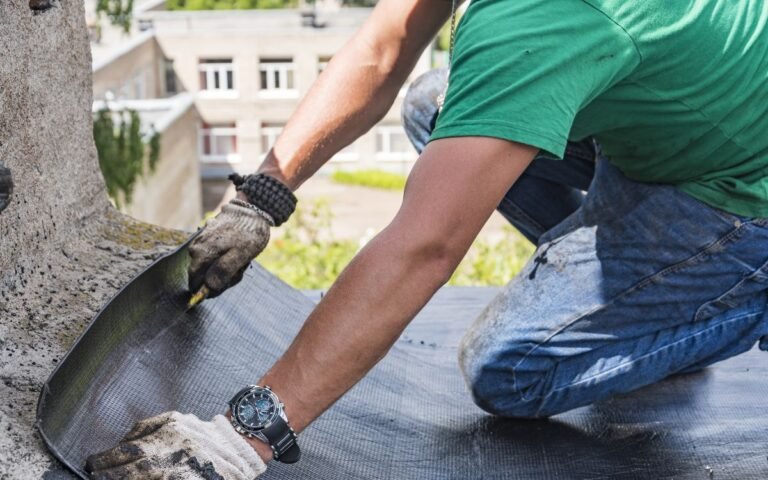Table of Contents
- Introduction
- Enhanced Durability
- Energy Efficiency
- Environmental Sustainability
- Aesthetic Appeal
- Cost-Effectiveness
- Advanced Installation Techniques
- Smart Roofing Technologies
- Conclusion
The demand for advanced roofing solutions is rising due to unpredictable weather patterns, rising energy costs, and ecological sustainability, prompting homeowners and property managers to seek systems beyond shelter. By consulting with a trusted roof installation contractor, you gain access to professional expertise and can stay ahead of the curve by adopting the latest advances in roofing technology. Modern roof installation invests in a property’s physical integrity, long-term sustainability, efficiency, and value. It offers protection, minimizes expenses, and maximizes comfort. Innovations are reshaping the roofing landscape, offering benefits like durability and innovative technologies. Explore the comprehensive benefits of modern roofing methods.
Enhanced Durability
The development of durable materials for weather resistance drives modern roof installation. As storms, high winds, and fluctuating temperatures become more common, the need for resilient roofing is urgent. Products like impact-resistant shingles, reinforced membranes, and interlocking metal panels protect homes from damage. Metal roofing, once mainly used on commercial structures, offers unparalleled longevity for residential properties. With recent advancements, property owners can find solutions tailored to specific climates, ensuring long-lasting protection and peace of mind.
Energy Efficiency
Due to rising heating and cooling costs, energy-efficient roofing is becoming a priority for homeowners. Cool roof systems use reflective surfaces to bounce UV and infrared rays away from the roof, preventing heat buildup in attics and living spaces. This reduces the strain on air conditioning systems and lowers utility bills. Solar roofing tiles generate renewable electricity without compromising style. Additional features include enhanced insulation, vapor barriers, and smart ventilation, ensuring a consistent, energy-friendly climate. These improvements make homes more livable and reduce reliance on artificial heating and cooling systems.
Environmental Sustainability
Modern roofing responds to global calls for sustainable construction, focusing on durability and efficiency. Green roofs feature living vegetation, absorb rainwater, reduce runoff, and promote biodiversity. Manufacturers also innovate with recycled materials like plastics, rubber, and reclaimed metals to create durable, eco-friendly products. Reflective, permeable membranes and systems for stormwater absorption are also popular, blurring the line between modern performance and environmental harmony. These solutions help reduce the burden on natural resources and promote local biodiversity.
Aesthetic Appeal
Modern roof systems cater to various design visions, offering various colors, shapes, and profiles. Composite shingles replicate traditional tile looks, while metal roofing offers bold contemporary lines or traditional charm. Sustainable clay, terracotta, and living green roofs offer unique palettes and visual interest while meeting building codes and performance standards. These options ensure a new roof becomes a standout architectural feature, elevating curb appeal in historic homes, modern builds, and in between.
Cost-Effectiveness
Modern roofing systems, such as metal, composite, or tile, can be more expensive initially but are offset by their long-term reliability, durability, and reduced need for repairs. These systems can last over 50 years, avoiding costly repairs. Additionally, these systems qualify for government incentives, local tax credits, and lower insurance premiums, making them a strategic investment for property owners. The total cost of ownership over the roof’s lifetime is often lower than that of less advanced options.
Advanced Installation Techniques
Roof installation processes have evolved to prioritize precision, efficiency, and minimal disruption for homeowners. Prefabricated and modular panels are produced in controlled factory settings, ensuring dimensional perfection before reaching the property. On-site assembly reduces construction timelines and inconvenience. Drone technology and computer-aided measurements improve fit, reduce construction delays, and improve performance. These innovations also reduce waste in landfills, making new roofs eco-friendly and high-tech.

Smart Roofing Technologies
In the digital age, roofing technology transforms homes with built-in sensors that monitor roof health in real-time. These devices can detect moisture buildup, temperature fluctuations, and hail or wind events, alerting homeowners or property managers. Remote management apps make it easier to schedule preventative maintenance and assess roof performance. Predictive analytics, machine learning, and integration with other smart home systems make roofs active components in a home’s longevity and value, minimizing surprises and enabling informed maintenance decisions.
Conclusion
Modern roof installation uses advanced materials, sustainable practices, and modern installation protocols to enhance home value and comfort. These solutions offer savings, durability, energy efficiency, and aesthetic enhancements. When considering a new roof or upgrade, consult an experienced contractor to understand the benefits of modern advancements, ensuring a sustainable future.

